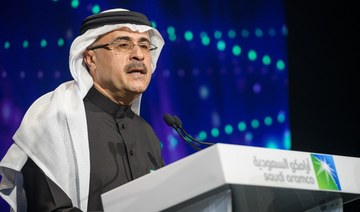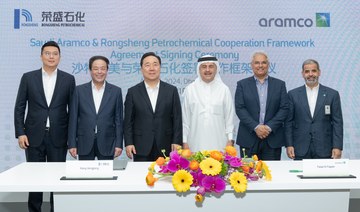SINGAPORE/KUALA LUMPUR: Demand for gasoline in Asia may peak much earlier than expected as millions of people in China and India buy electric vehicles over the next decade, threatening wrenching change for the oil industry, oil and auto company executives warned.
They said refiners should prepare for a future in which gasoline, their biggest source of revenue, will be much less of a cash cow.
Change is being prompted by policy moves in India and China, where governments are trying to rein in rampant pollution, cut oil imports and compete for a slice of the fast-growing green car market.
In its “roadmap,” released in April, China said it wants alternative fuel vehicles to account for at least one-fifth of the 35 million annual vehicle sales projected by 2025.
India is considering even more radical action, with an influential government think-tank drafting plans in support of electrifying all vehicles in the country by 2032, according to government and industry sources interviewed by Reuters late last week.
“We will see a clear shift to electric cars. It is driven by legislation so electric cars are coming, it is not a niche anymore,” Wilco Stark, vice president for strategy and product planning at German car maker Daimler, told Reuters.
Stark and other executives were interviewed during the Asia Oil & Gas Conference in Kuala Lumpur this week.
Daimler sees electric vehicles contributing 15-20 percent of its overall sales by 2025 and at least an additional 10 percent of sales coming from hybrids, he said.
Electric cars currently make up less than 2 percent of the global car fleet and any faster-than-expected growth in that percentage will materially impact oil demand and the refining business.
“Technology is moving fast. In 10-15 years... our gasoline market might not be the same as it is today,” said Dawood Nassif, board director at the state-owned oil company Bahrain Petroleum Company (BAPCO).
With gasoline responsible for up to 45 percent of refinery output and one of the highest profit-margin fuels, a slowdown or fall in demand will have far-reaching implications.
Credit agency Moody’s says that the fast pace of technological development makes accurate predictions difficult, but warned that direct financial effects from falling oil demand, including gasoline, “could be material by the 2020s.”
The changes are so big that the influential International Energy Agency (IEA) plans to revisit its analysis of electric vehicle trends and oil demand.
“The choices made by China and India are obviously most relevant for the possible future peak in passenger car oil demand,” an IEA spokesman told Reuters.
In its current policies scenario, last updated in November 2016, the IEA still expects oil demand from vehicle use to rise until 2040.
It is not just China and India that are changing fast.
Asia’s major carmakers, Japan and South Korea, already sell significant volumes of hybrid vehicles — which operate off gasoline and electricity — while fuel efficiency gains will continue to cut gasoline consumption for standard vehicles.
There will, though, be some major hurdles before a country like India goes mostly electric. High battery costs would push up car prices and a lack of charging stations and other infrastructure in India means carmakers may hesitate to make the necessary investment in the technology.
Asia has long been the main driver of future oil demand thanks to supercharged growth in sales of autos.
China sells more than 2 million new cars a month and is challenging the US as the world’s biggest oil consumer. India now is the world’s third-biggest oil importer, ahead of Japan.
More than a third of the world’s refineries are in Asia, up from just 18 percent in 1990. For refiners, the growth of vehicles that run on electricity and other alternative fuels is a wake-up call. They can tweak the products they make from crude oil to an extent, but still mostly rely on gasoline consumption for revenue.
“Rising pressure on margins and cash flows will potentially lead to stranded assets,” Moody’s warned, using a term for assets that no longer provide an economic return because of changes in the market or regulatory environment. The oil industry is taking note. Royal Dutch Shell said this week that it “is looking into ... the potential to introduce electric vehicle charging points at our retail sites in several countries.”
Oil executives say it is still premature to expect overall oil demand to fall soon. “Our industry will not disappear,” said Abdulaziz Al-Judaimi, senior vice president for downstream at Saudi Aramco, the world’s biggest oil company.
They are envisaging a shift toward producing more petrochemicals like plastics or household chemicals, areas where consumption is soaring.
Saudi Aramco is jointly developing the huge Malaysian RAPID refinery and petrochemical complex with state-owned Petronas and the two said this week they are exploring an expansion of its petrochemical capacity.
Exxon Mobil this week said it would buy a petrochemical plant in Singapore.
Refiners also still see strong oil demand from heavy industry.
“Refiners may shift their focus from gasoline to middle distillates,” said KY Lin of Taiwan’s Formosa Petrochemical, a major Asian refiner. “Gasoil is used widely, including in farming/industrial equipment... and also as a marine fuel.”
New Delhi, Beijing’s plans for electric cars threaten to cut gasoline demand
New Delhi, Beijing’s plans for electric cars threaten to cut gasoline demand
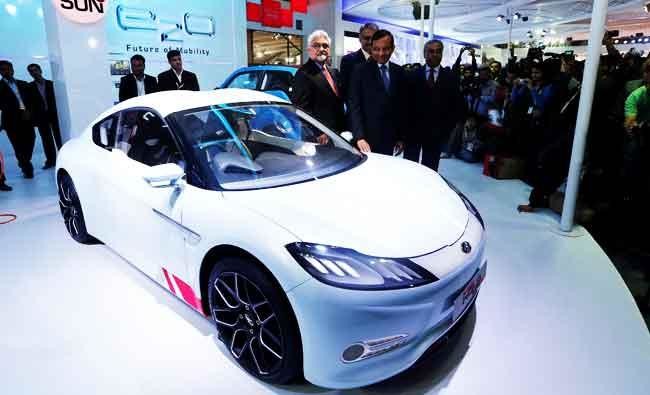
IsDB, SFD, Arab Coordination Group join initiative to raise $500m for education initiatives
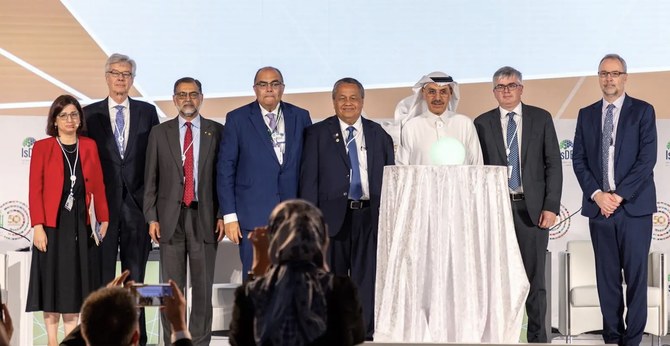
RIYADH: A global partnership involving the Islamic Development Bank will inject $500 million into educational initiatives across member countries of the Organization of the Islamic Cooperation.
During the annual meetings and golden jubilee celebrations of the IsDB, the Arab Coordination Group and the Saudi Fund for Development also joined The Global Partnership for Education, the Saudi Press Agency reported.
The Global Partnership for Education is a multi-stakeholder partnership and funding platform that aims to strengthen education systems in developing countries.
The amount will be raised by the Smart Finance for Education Initiative, an innovative financing tool.
Moreover, partners also pledged an additional $350 million to the initiative, including $150 million from the IsDB, $100 million from the Arab Bank for Economic Development in Africa, and $50 million from The Islamic Solidarity Fund for Development as well as $50 million from the Global Partnership for Education.
The initiative aims to enhance access to quality education in 37 OIC member countries, where 28 million children are without schooling.
Also at the event, the Islamic Corporation for the Insurance of Investment and Export Credit, a member of the IsDB concerned with providing Shariah-compliant insurance services, signed a retakaful agreement for a percentage of the shares allocated to Indonesia for the benefit of the country’s Eximbank.
A retakaful agreement is an Islamic reinsurance contract where takaful operators transfer a portion of their risk to a retakaful operator in compliance with Shariah principles.
The arrangement aims to provide strategic expertise and capabilities in the field of retakaful through a quota-sharing treaty specifically designed to support the launch of the financial institution’s new export credit takaful program product.
This comes as the business expected to be insured under this treaty is estimated at a value of $13 million during the year 2024.
During the IsDB annual meetings and jubilee celebrations, the bank’s president, Mohammed Sulaiman Al-Jasser, confirmed that the entity has designed a strategy for eco-conscious growth and low carbon reduction by supporting members to reach the zero-carbon goal.
Al-Jasser also pointed out that 40 of the bank’s projects are about renewable energy, green projects, and financing climate action.
He underlined the bank’s focus on green initiatives and sustainable development sukuk, indicating they are compatible with the Capital Markets Union standard.
The IsDB’s 2024 annual meetings are being held under the patronage of King Salman bin Abdulaziz in Riyadh from April 27 - 30.
The annual sessions coincide with IsDB’s golden jubilee, as the institution celebrates 50 years of promoting economic and social development in 57 member nations under the slogan “Taking pride in our past, shaping our future: authenticity, solidarity, and prosperity" reflecting the bank’s legacy and future goals.
Closing Bell: TASI closes in green; Saudi banks profits up
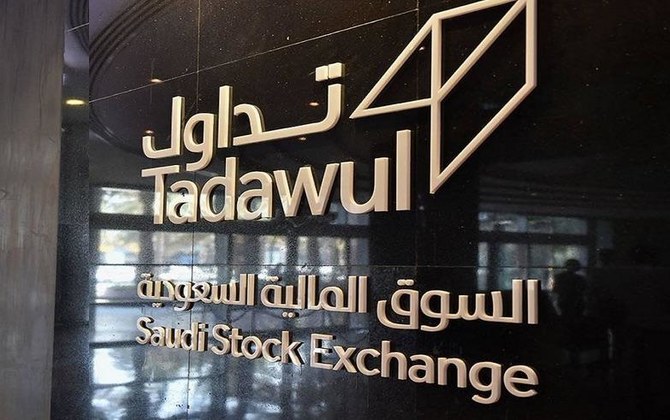
RIYADH: Saudi Arabia’s Tadawul All Share Index wrapped up Monday’s trading session at 12,369.46 points, witnessing an increase of 137.92 points, or 1.13 percent.
The parallel market, Nomu, ended the day at 26,227.72 points, shedding 3.11 points or 0.01 percent.
Conversely, the MSCI Tadawul Index grew by 24.35 points to close at 1,569.81, a 1.58 percent increase.
TASI reported a trading volume of SR8.2 billion ($2.19 billion), with 165 stocks making gains and 63 witnessing declines.
Nomu, on the other hand, saw a trading volume of SR52 million.
On the announcement front, Al Rajhi Bank reported an increase in profits to SR4.4 billion for the first quarter of 2024, reflecting a 6 percent rise from SR4.1 billion recorded during the corresponding period in 2023.
The bank primarily attributed this growth to a 10.2 percent increase in net income from financing and investment activities, driven by a rise in total income on financing and investment.
This was further supported by an increase in total returns on these investments, according to a bourse filing.
Its operational income also saw a healthy increase, rising by 6.6 percent due to gains in net financing and investment income alongside income from other operations.
However, these gains were partially offset by a decrease in income from banking service fees and foreign currency exchange activities.
On the expenditure side, total operating expenses, including provisions for credit losses, rose by 7.2 percent. This increase was largely due to higher depreciation costs and employee salaries and benefits.
Despite these rising costs, the bank managed to mitigate some financial pressures with a reduction in other general and administrative expenses. Notably, provisions for credit losses escalated significantly, from SR359 million in the previous year to SR421 million in 2024, reflecting a 17.3 percent increase.
Furthermore, Bank Albilad also saw an increase in profits as it released its first quarter results.
The bank reported a 15 percent increase in profits, reaching SR643.1 million up from SR559.9 million in the same quarter of the previous year, according to a bourse filing.
The increase in profits was primarily attributed to a robust performance in its investment and financing assets, which saw a 21 percent increase in income.
This significant growth in asset income helped offset the 54 percent rise in the return on deposits and financial liabilities, underlining the bank’s effective management of its asset portfolio against rising costs.
Additionally, Saudi National Bank also managed to secure an increase in profits in the first quarter. The bank reported a marginal rise in its profits to SR5.04 billion from SR5.02 billion during the same period last year.
This modest increase in profits was underpinned by a significant 21.9 percent rise in special commission income, driven largely by growth in the bank’s financing and investment portfolios, coupled with rising interest rates.
The bank also experienced a slight 0.4 percent increase in net income attributable to shareholders, buoyed by a 2.4 percent improvement in total operating income and gains from other non-operational financial activities.
However, petrochemical company Saudi Kayan reported a loss in its first quarter results. Despite the ongoing challenges, the company managed to reduce its losses to SR571.9 million from SR673.3 million in the same quarter the previous year.
Saudi Kayan attributed the narrowed losses primarily to an increase in revenues, spurred by higher sales volumes, which helped counterbalance the impact of lower average product selling prices.
In a Tadawul filing, the company noted that while the average selling prices had decreased, the overall financial performance improved compared to the previous year.
Saudi Aramco retains its status as Middle East’s most valuable brand
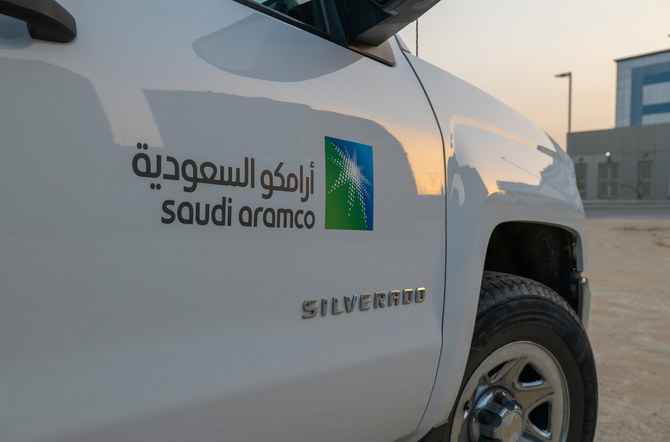
RIYADH: Energy giant Saudi Aramco has maintained its position as the Middle East’s most valuable brand, with a value of $41.5 billion, according to a report.
The latest analysis by Brand Finance revealed the firm continued to dominate the region despite an 8 percent drop in value, driven by a fall in crude oil prices and lower sales volumes.
The report noted that a 12 percent increase in brand value to $13.9 billion meant the Kingdom’s telecommunications firm stc was ranked as the second most valuable in the Middle East and the region’s most sought-after telecom company.
Andrew Campbell, managing director of Brand Finance in the Middle East, said that stc is steadily progressing as one of the leading telecommunications firms globally.
“While Aramco remains the dominant player in terms of brand value in Saudi Arabia, stc’s strategic acumen, characterized by ongoing diversification and digital transformation, have further solidified the brand’s status as Saudi Arabia’s strongest brand, while also positioning it among the world’s leading telecoms brands,” said Campbell.
The report noted that stc encompassed “an integrated system of subsidiaries specialized across sectors, alongside its traditional telecommunications services.”
It add that the company’s acquisition of an interest in Telefonica “marks another key milestone in stc’s growth journey.” said Brand Finance.
With a brand value of $6.4 billion, Al Rajhi Bank became the third most valuable firm in the Kingdom.
Saudi Basic Industries Corp. and Saudi National Bank were ranked fourth and fifth, respectively, with values totaling $4.9 billion and $4.5 billion, respectively.
Saudi Arabia’s King Faisal Specialist Hospital & Research Center, with a value of $1.5 billion, became the Middle East’s most valuable Healthcare label, the report added.
In the UAE, Abu Dhabi National Oil Co. was named the most valuable brand, with a value of $15.2 billion.
On the other hand, Qatar National Bank was ranked the top-rated brand among Qatari firms, with a value of $8.4 billion.
Islamic finance industry projected to grow in 2024-2025
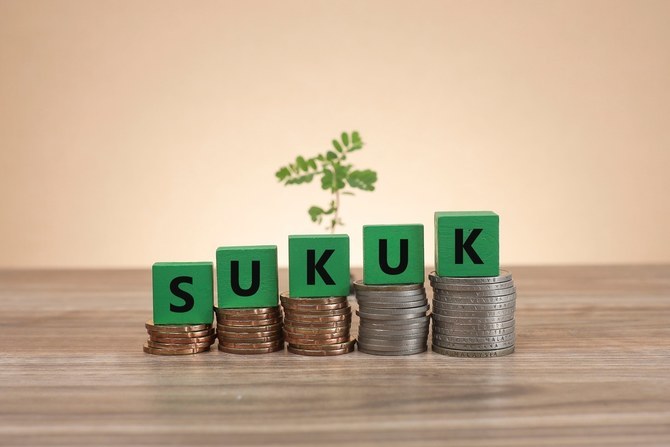
RIYADH: The Islamic finance industry is projected to grow globally in 2024-2025 with total assets likely to witness single-digit growth driven by economic diversification efforts, a report said.
It predicted that sukuk issuance globally would hover between $160 billion and $170 billion in 2024, representing a steady momentum from $168.4 billion in 2023 to $179.4 billion in 2022.
In its latest analysis, credit rating agency S&P Global highlighted that the industry grew by 8 percent and 8.2 percent in 2023 and 2022, respectively, stemming from growth in banking assets and the sukuk industry.
According to the US-based firm, Islamic banking assets grew 56 percent in 2023 compared to 72 percent in 2022.
Financial institutions across the Gulf Cooperation Council region accounted for 86 percent of the reserve increase in 2023, with Saudi Arabia becoming the chief contributor, having generated 56.7 percent of the maturation.
“We expect the implementation of Vision 2030 and growth in corporate and mortgage lending to continue supporting the Islamic finance industry over the next 12-24 months. In addition, the UAE showed a stronger contribution in 2023 thanks to the good performance of the non-oil sector,” the report noted.
It added: “Elsewhere, we observed some growth, particularly in Turkiye and Indonesia. The performance in Malaysia and Turkiye was somewhat tempered by the depreciation of the ringgit and the lira.”
According to the US-based firm, the issuance of this Shariah-compliant debt product began on a strong footing in 2024, with Saudi Arabia becoming a key contributor to the performance.
“The drop in issuance volumes in 2023, which mainly resulted from tighter liquidity conditions in Saudi Arabia’s banking system and Indonesia’s lower fiscal deficit, was somewhat compensated by an increase in foreign currency-denominated sukuk issuance,” S&P Global said in the report.
It added: “The market has started 2024 on a strong footing, with total issuance reaching $46.8 billion at March 31, 2024, compared with $38.2 billion at March 31, 2023.”
The analysis highlighted that the sukuk market will continue its growth momentum in the near term as financing needs in core Islamic finance countries remain high, given ongoing economic transformation programs, especially in countries like Saudi Arabia.
“We expect the sukuk market to fill in some of these needs. Specifically, we see some opportunities in the structured finance space with banks tapping the sukuk market to refinance their sizable mortgage books,” said the agency in the report.
The agency highlighted that the drive for digitalization and sustainability initiatives have yielded mixed results in the Islamic finance industry.
“While opportunities related to sustainable finance are significant as the industry is concentrated in oil exporting countries, progress has been relatively slow and limited in the global context,” according to S&P Global.
However, the report noted that digitalization has helped the banking side of the industry.
S&P Global concluded the study by saying that the future of Islamic finance is sustainable, collaborative, and digital.
“It is sustainable thanks to the alignment between Shariah principles, overarching pillars of sustainability, and the value proposition of Islamic finance that capture more than just financial objectives,” said the report.
According to the analysis, the future of Islamic finance is collaborative because stakeholders do not want to disrupt the industry equilibrium and erase the development achieved over the past 50 years.
The report added that digitalization will also impact Islamic finance in the coming years, as leveraging emerging technologies could help the industry enhance its efficiency and ultimately increase its value proposition for investors and issuers.
Earlier this month, another report released by Fitch Ratings noted that global outstanding sukuk expanded 10 percent year on year to reach $867 million at the end of the first quarter of 2024.
The credit rating agency attributed the growth of this Islamic debt product to funding and refinancing needs, and the development of the debt capital market in the GCC region.
The report, however, added that new Shariah requirements that could alter credit risk, geopolitical uncertainties and high oil prices, could affect the growth of the sukuk market this year.
Saudi Aramco is looking at investment in new energies outside of the Kingdom, CEO says
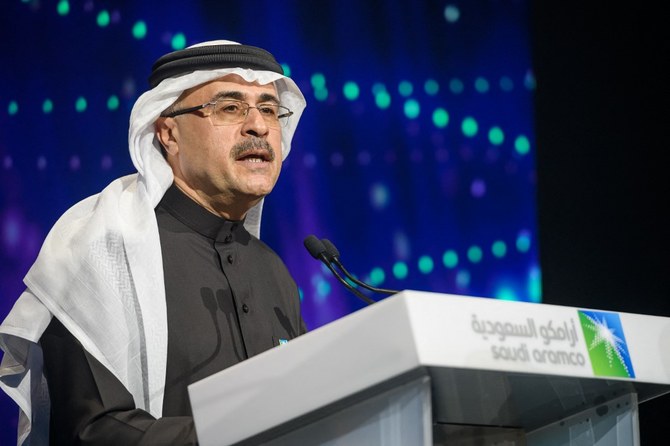
DUBAI: Saudi Arabia’s state-oil giant Aramco is looking at investments right now in new energies outside of the Kingdom, CEO Amin Nasser said on Monday at the sidelines of a World Economic Forum special meeting held in Riyadh.


